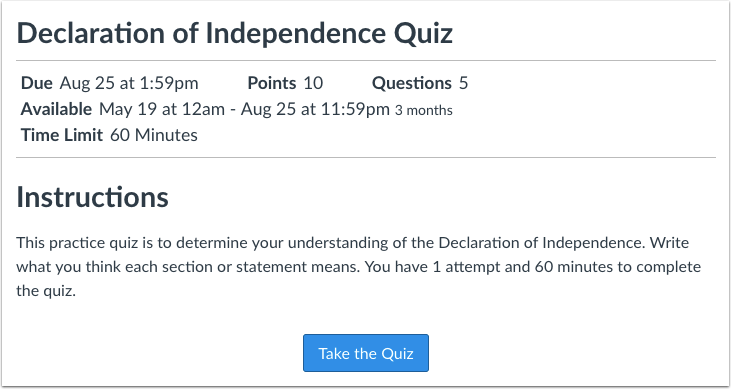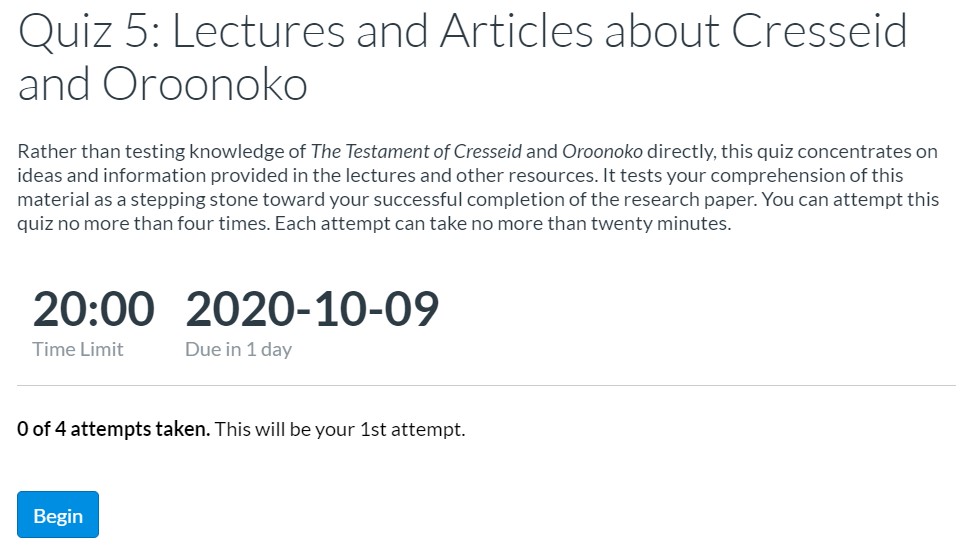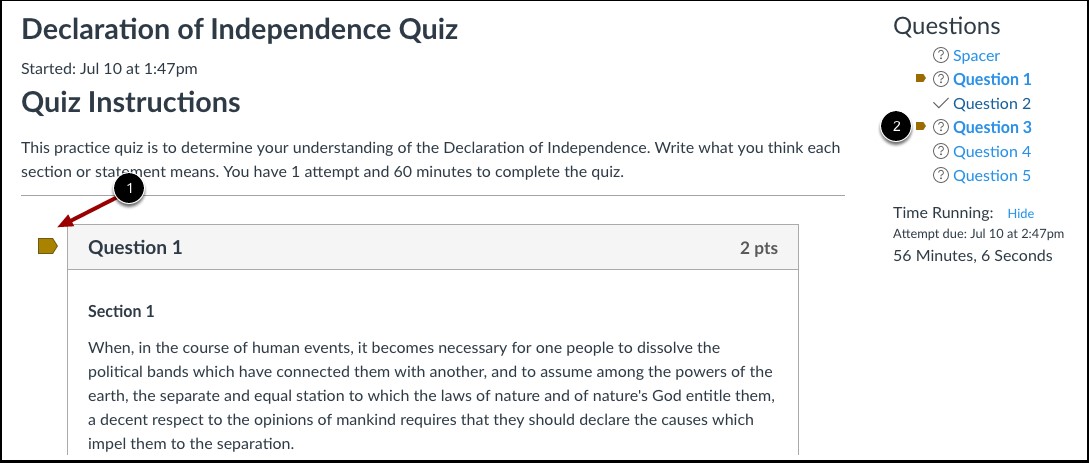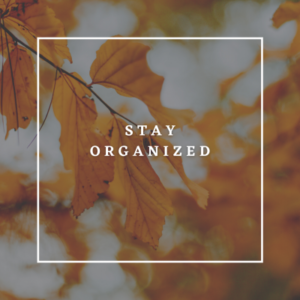
“Pumpkin Patch” by B. D. W. Kristoff, CC BY 2.0
Brette D. W. Kristoff, Graduate Student – Communications Specialist, GMCTL,
October 9, 2020
One of the biggest changes this term will be the online test and quiz format. Open book?! More like scrambling to find your laptop charger half-way through…
Here are some tips to help ace your Canvas Quizzes this term!
1) In your Canvas Course Navigation, find the Quizzes in the menu.
- Depending on how your instructors have set up the course, you might be able to see some, or all, of your upcoming quizzes. Select the available quiz that’s due.
Here are a couple of examples of Canvas Quiz instructions, in different formats – the second one is from ‘new quizzes’:


- Your instructor has different options for how to set up a Canvas quiz (multiple choice, true/false, or fill-in the blank styled questions for example).Questions might show one at a time (if so, figure out if you can back track in different quiz formats – classic or new).The hints below are for the ‘classic’ format.
- The point value of each question will show in the top corner once you begin a new question.
- The Questions sidebar is a helpful tool for navigating the quiz [see #2 in the figure below]. This list will show you which questions have been completed (they’ll be slightly faded out), and which questions are left.
- If your instructor allows for more than one attempt on a question, you can Flag a question to come back to it later. These questions will have a yellowish tab next to them.
- Canvas Quizzes will save automatically, so even if you get booted out for some reason, your work will still be there. Use the Questions tab to return to the question you were working on.

2) Keep an eye on the time!
- Canvas quizzes will autosubmit at the end of the allotted time.
- This means if your quiz is due at midnight and will take 60 minutes, be sure to start the quiz early enough to complete the exam.

- This means if your quiz is due at midnight and will take 60 minutes, be sure to start the quiz early enough to complete the exam.
- Once you begin a Canvas quiz, a Time Running box will appear on the margin of your screen automatically (under the Questions list).
- Depending on how your instructor has designed the quiz or exam, the Time Running will show you how much time you have left to complete the quiz.
- You can choose to hide the TIme Running window, if that stresses you out.
- Tip: If you know the general format of the quiz ahead of time, determine how much time this will roughly leave you for each question!
- You can choose to hide the TIme Running window, if that stresses you out.
- Depending on how your instructor has designed the quiz or exam, the Time Running will show you how much time you have left to complete the quiz.
3) Prep your virtual exam-space ahead of time
- While the Canvas mobile app is super useful on the go, it’s not recommended you take quizzes on the mobile Canvas app.
- Instead, use a fully-charged computer or laptop with Chrome or Firefox as your internet browser.
- Restart your computer just before the quiz. Make sure you’re logged on plugged in , and ready to go before your exam is scheduled.
- Make sure your internet connection is strong and that you’re in a quiet, private place to write any exams. Use an ethernet cable if possible.
- For more, visit the Canvas Guide for Quizzes.
- Good Luck! You’ve got this!
Wondering how your assignment grades will impact your overall average? Check out these Canvas Student tips for using the Canvas “What-if?” grades tool.
For more support options with Canvas, see the USask Student Canvas page.


 Click the arrow beside your What-If grade to revert to your original score.
Click the arrow beside your What-If grade to revert to your original score.

